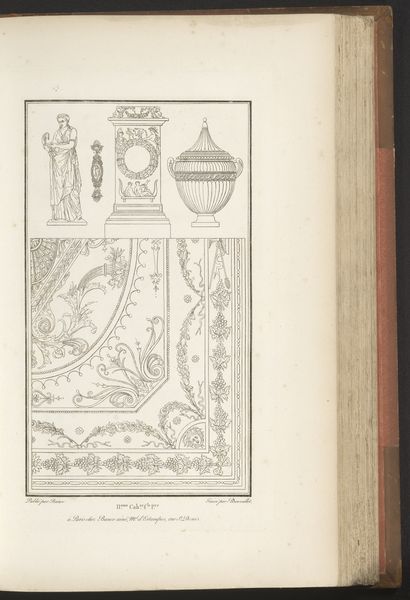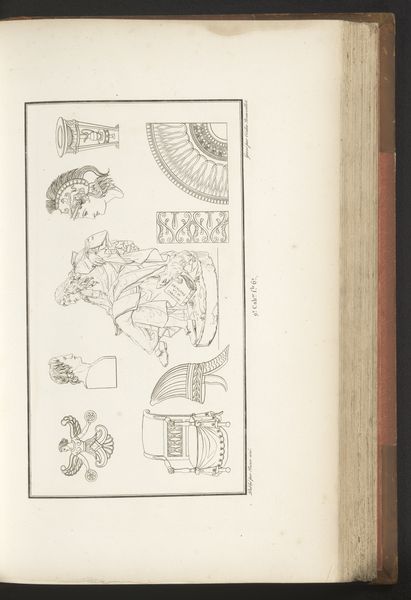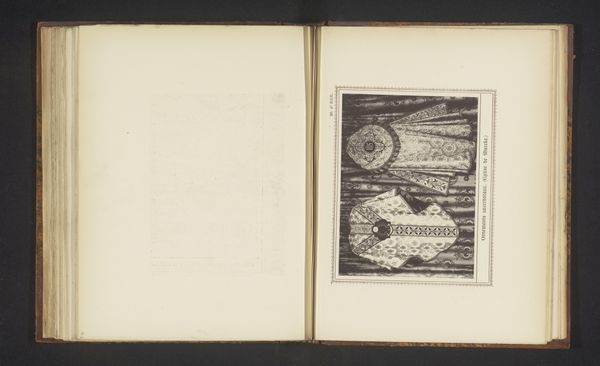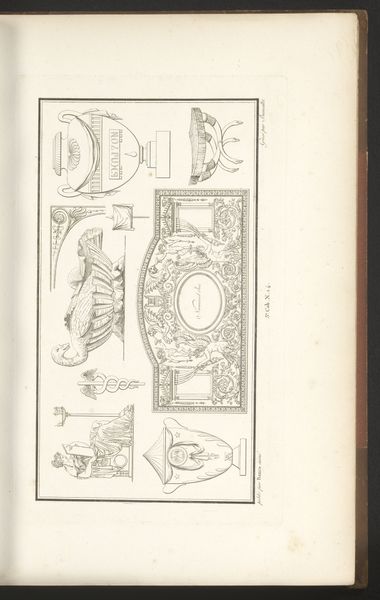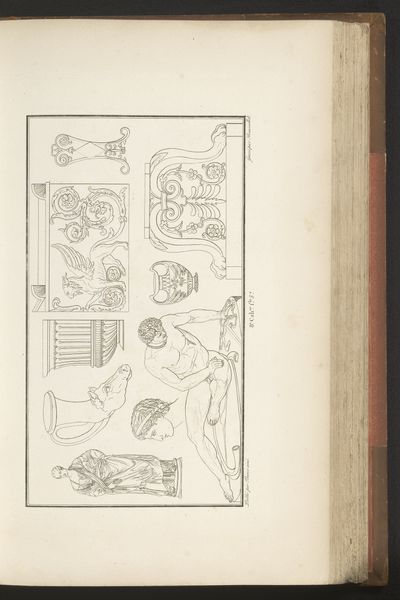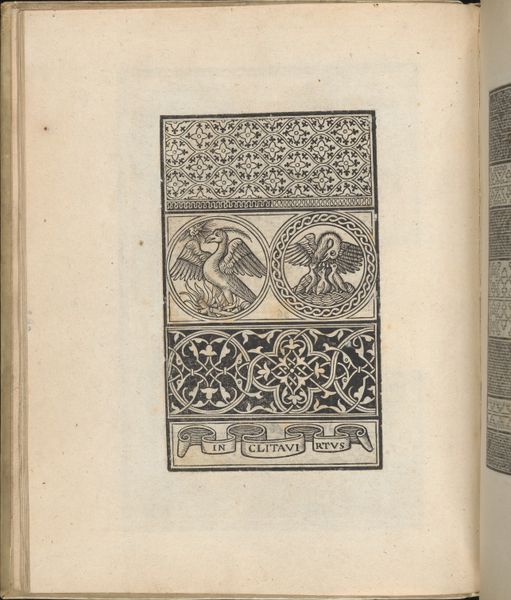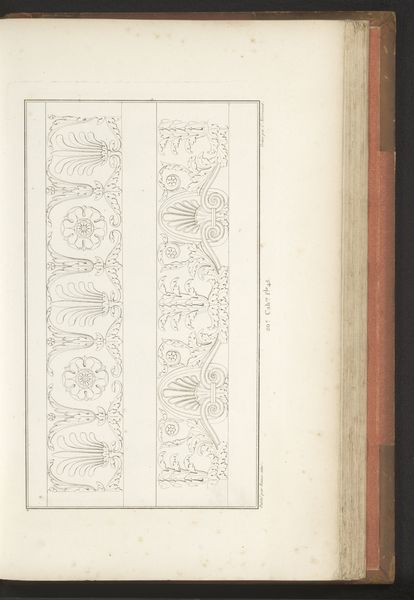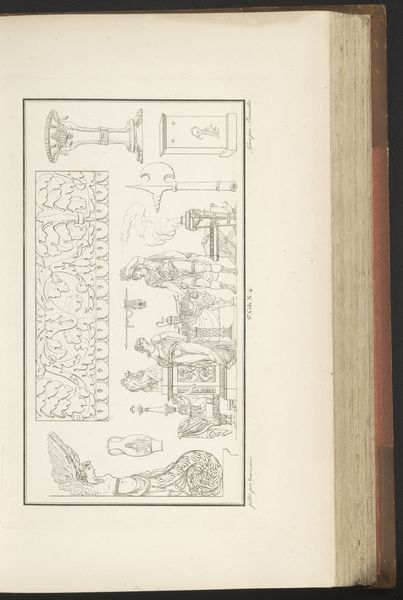
drawing, ornament, paper, ink
#
drawing
#
neoclacissism
#
ornament
#
figuration
#
paper
#
form
#
ink
#
geometric
#
line
#
academic-art
Dimensions: height mm, width mm
Copyright: Rijks Museum: Open Domain
Curator: Let's take a look at this page, "Diverse ornamenten," or "Diverse Ornaments," created in 1820 by Pierre-Nicolas Beauvallet. It’s an ink drawing on paper, part of a larger collection, I imagine, showing examples of neoclassical designs. Editor: At first glance, it strikes me as almost clinical, like an architect's draft. The spareness of the lines and the limited tonal range creates a very austere mood, yet the variety of objects shown conveys something livelier about daily life at the time. Curator: Exactly! It's meant to be practical. Each object provides examples of decorative patterns. From rosettes to geometric flourishes, to objects reminiscent of classical antiquity and a human figure shown with anatomical correctness. It represents a visual catalog intended for artisans, architects, and craftsmen to draw inspiration from. Editor: I’m wondering about the labour that goes into something like this. There are so many details; each meticulously rendered motif suggests careful execution and control. You think of the number of sketches required, the hours spent hunched over a desk transferring ideas onto the page... I bet these were very well received when the production of manufactured objects began to skyrocket. Curator: Absolutely, because you can imagine this as part of the Neoclassical movement that looked back to Greece and Rome, rediscovering these historical forms and decorative patterns. There is that pursuit of ideal beauty through balanced form. These drawings distill the essence of classicism in a simplified manner. The focus of academic art was, precisely, the idea that perfection must be attained through reason and rigorous study. Editor: But the material also speaks to me – paper, ink, drawing. Common resources elevated through a designer’s skills and their labor. It’s this interesting tension between the idealized forms and the down-to-earth medium. It suggests to me a potential accessibility, even in times that are defined by stark class divides and production structures. Curator: A very compelling contrast. It's easy to get lost in the theoretical and classical origins but, seeing it as an act of production connects this artwork to something very tactile and real. I will be looking at "Diverse ornamenten" differently from now on. Editor: Precisely! The beauty of art, it seems, is that there’s room for idealism and everyday reality, both at the same time.
Comments
No comments
Be the first to comment and join the conversation on the ultimate creative platform.
